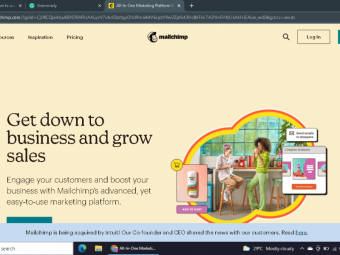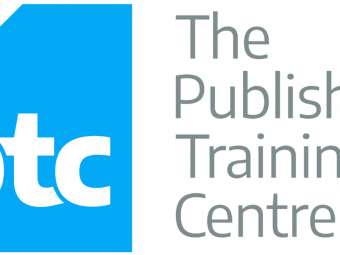Kubernetes Crash For Java Developers
Tags: Kubernetes
Kubernetes for Beginners - with Spring Boot Java Microservices - Play with GKE, AWS EKS & Azure AKS
Last updated 2022-01-10 | 4.7
- Simplify DevOps with Docker and Kubernetes for 6 Java Spring Boot Applications- Use Kubernetes to orchestrate Docker based Java Spring Boot Microservices
- Learn Kubernetes and Docker Concepts - Images
- Repository
- Containers
- Pods
- Replica Sets and Deployments
What you'll learn
Simplify DevOps with Docker and Kubernetes for 6 Java Spring Boot Applications
Use Kubernetes to orchestrate Docker based Java Spring Boot Microservices
Learn Kubernetes and Docker Concepts - Images
Repository
Containers
Pods
Replica Sets and Deployments
Play with Kubernetes and Docker Commands
Understand Architecture of Kubernetes and Docker
You will use Kubernetes Declaratively with YAML Configuration
You will learn to expose your Kubernetes Deployments with Services and Ingress
You will learn to use Kubernetes Config Maps and Secrets
You will make Zero Downtime Releases with Kubernetes
You will learn to Create Kubernetes clusters with Master Node and Nodes
You will learn to deploy Spring Boot Web Applications and Rest API to Kubernetes
You will become an expert on the Kubernetes command line tool - kubectl
You will play with Docker
Docker Compose and Kubernetes
You will use Persistent Storage with Kubernetes - PV and PVC
You will implement Service Discovery
Centralized Configuration
Distributed Tracing and Load Balancing for microservices deployed in Kubernetes
You will implement different Auto Scaling approaches with Kubernetes
You will use Google Stackdriver for Tracing
Error Reporting and Logging
You will integrate Spring Boot Microservices on Kubernetes with Istio
You will perform Blue Green Deployments and Canary Deployments with Istio
You will integrate Kiali
Graphana and Prometheus with Istio and Kubernetes
You will implement Distributed Tracing for Spring Boot Microsevices with Istio and Jaegar
You will use Helm to Automate Microservices Deployment on Kubernetes
You will Join 300
000 Learners having AMAZING LEARNING Experiences with in28Minutes
* Requirements
* You have an attitude to learn while having fun :)* You have some programming experience with Java
* Spring and Spring Boot
* You DO NOT need to have any experience with Kubernetes or Docker
* You DO NOT need to have any experience with Google Cloud
* You DO NOT need to have any experience with GKE - Google Kubernetes Engine
* We will help you install Eclipse
* Git client and Docker Desktop
Description
- Simplify DevOps with Docker and Kubernetes for 6 Java Spring Boot Applications
- Use Kubernetes to orchestrate Docker based Java Spring Boot Microservices
- Learn Kubernetes and Docker Concepts - Images, Repository, Containers, Pods, Replica Sets and Deployments
- Play with Kubernetes and Docker Commands
- Understand Architecture of Kubernetes and Docker
- You will use Kubernetes Declaratively with YAML Configuration
- You will learn to expose your Kubernetes Deployments with Services and Ingress
- You will learn to use Kubernetes Config Maps and Secrets
- You will make Zero Downtime Releases with Kubernetes
- You will learn to Create Kubernetes clusters with Master Node and Nodes
- You will learn to deploy Spring Boot Web Applications and Rest API to Kubernetes
- You will become an expert on the Kubernetes command line tool - kubectl
- You will play with Docker, Docker Compose and Kubernetes
- You will use Persistent Storage with Kubernetes - PV and PVC
- You will implement Service Discovery, Centralized Configuration, Distributed Tracing and Load Balancing for microservices deployed in Kubernetes
- You will implement different Auto Scaling approaches with Kubernetes
- You will use Google Stackdriver for Tracing, Error Reporting and Logging
- You will integrate Spring Boot Microservices on Kubernetes with Istio
- You will perform Blue Green Deployments and Canary Deployments with Istio
- You will integrate Kiali, Graphana and Prometheus with Istio and Kubernetes
- You will implement Distributed Tracing for Spring Boot Microsevices with Istio and Jaegar
- You will use Helm to Automate Microservices Deployment on Kubernetes
- You will Join 300,000 Learners having AMAZING LEARNING Experiences with in28Minutes
Course content
15 sections • 137 lectures








 This course includes:
This course includes:











![Chatbot online courses [for freshers and experienced] Chatbot online courses [for freshers and experienced]](https://www.courses-for-you.com/images/uploads/thumbs/11-23.jpeg)


